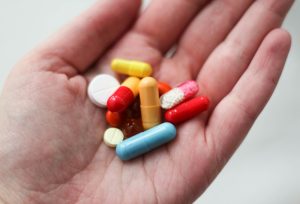By Terry Hacienda, The Fresh Toast
There is a big change in consumer behavior…here is some key information it things involve.
With the mainstreaming of marijuana, alcohol is taking a dip in use. Gen Z are embracing the trend of California sober and all generations are taking a second look at cannabis. The American Medical Association and the College of Physicians have recognized cannabis has medical benefits, and a significant portion of users are using it for anxiety and sleep. Microdosing has become a thing to help people manage stress, focus, and more.
RELATED: The Most Popular Marijuana Flavors
But how people consume has evolved, so has how they have consumed. Traditionally, people smoke a joint, or a bong or bowl. Homemade edibles were popular, but not nearly as used as inhaling. With with legal marijuana, come reliable, flavorful products which have captured the public’s eye – and wallet. And gummies and vapes are discreet, on-the-go ways to consume with the added benefit of discretion. In data collected from BDSA, a leading analytical firm who covers cannabis, shared 49% of those who have used marijuana have used a gummy.
While both edibles and flower contain THC, the highs they produce are not exactly the same. Here are the key differences between gummies and joints.
Photo by SageElyse/Getty Images
THC
THC, or tetrahydrocannabinol, is the chemical responsible for most of marijuana’s psychological effects. It is one of many compounds found in the resin secreted by glands of the marijuana plant. It acts much like the cannabinoid chemicals made naturally by the body, according to the National Institute on Drug Abuse (NIDA). Cannabinoid receptors are concentrated in certain areas of the brain associated with thinking, memory, pleasure, coordination and time perception. THC attaches to these receptors and activates them and affects a person’s memory, pleasure, movements, thinking, concentration, coordination, and sensory and time perception, according to NIDA.
Dosage
With over 50% of the population having access to legal dispensaries, the difficult guess from homemade treats are over. Retail purchased gummies usually have 10mg. Microdosing usually is 2.5-5 mg, so you might want to consider a half if you are a newbie.
Smoking can vary based on the strengthen of the flower and how much you inhale. Dispensary purchased pre-rolled joints usually give an idea of the strengthen, so pay attention to how you are feeling before you toke another time.
Photo by Greg Raines via Unsplash
Timing
Inhaled marijuana takes goes straight to the blood via the lungs. It can take 1 to 15 minutes to kick in, peaking for an hour or so before the effects start to fade. The high can last 6 hours after use.
Edible cannabis has to be digested and metabolized via the stomach then to the liver, so it could take up to an hour to kick in and two hours for the high to peak. The high will fade over the next three hours can last 8-12 hours after use.
Photo by PeopleImages/Getty Images
Effects
Timing, dosage and absorption can provide a different high, so the effects are personal to you. Edibles can sometimes induce a more intense, intoxicating high than smoking. But smoking can provide a longer high with the constant puff, puff, puff.
Trial and error help decide the best method for you.
The Fresh Toast is a daily lifestyle platform with a side of cannabis. For more information, visit www.thefreshtoast.com.
Copyright 2024 The Fresh Toast. Distributed by TRIBUNE CONTENT AGENCY, LLC.












